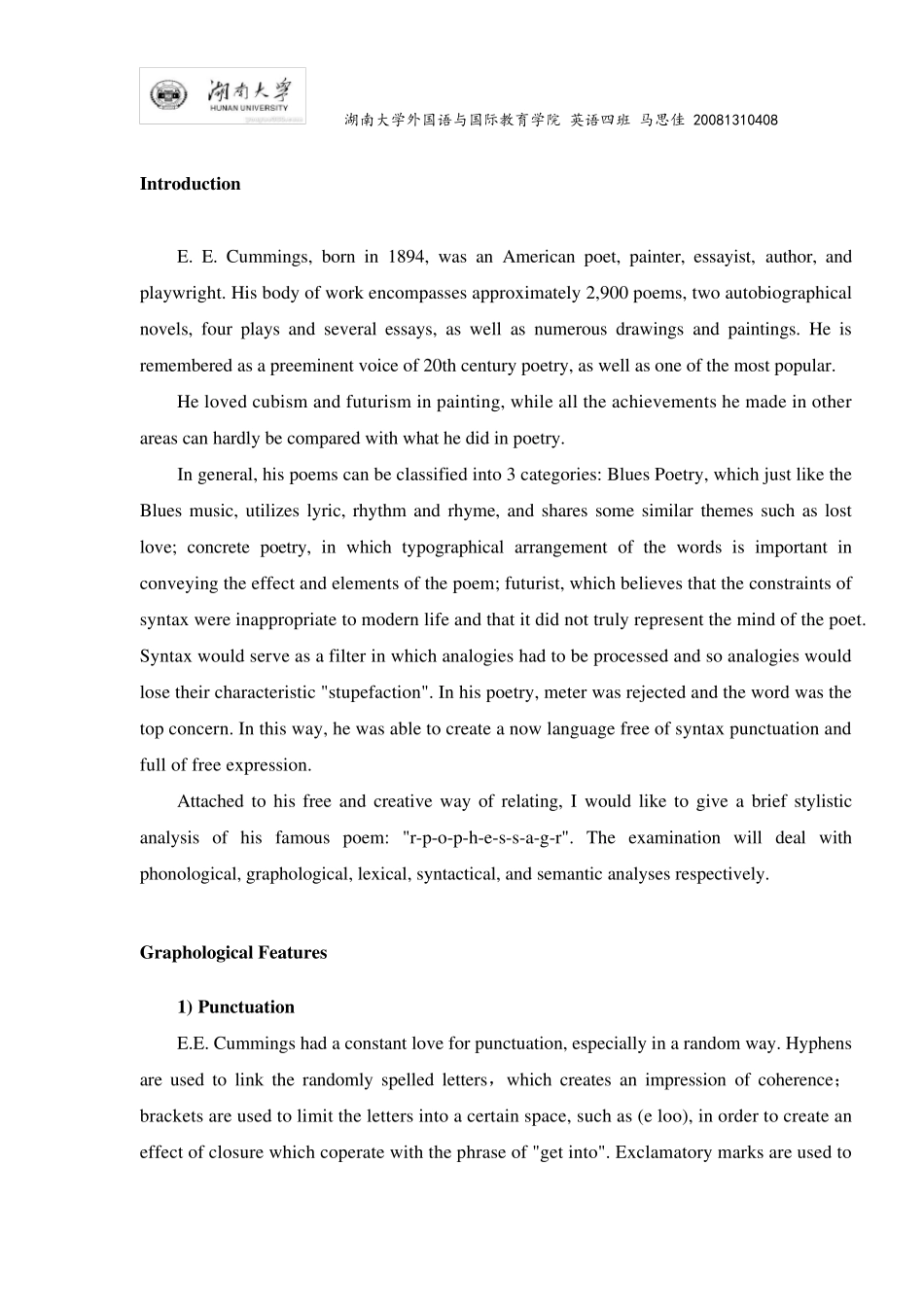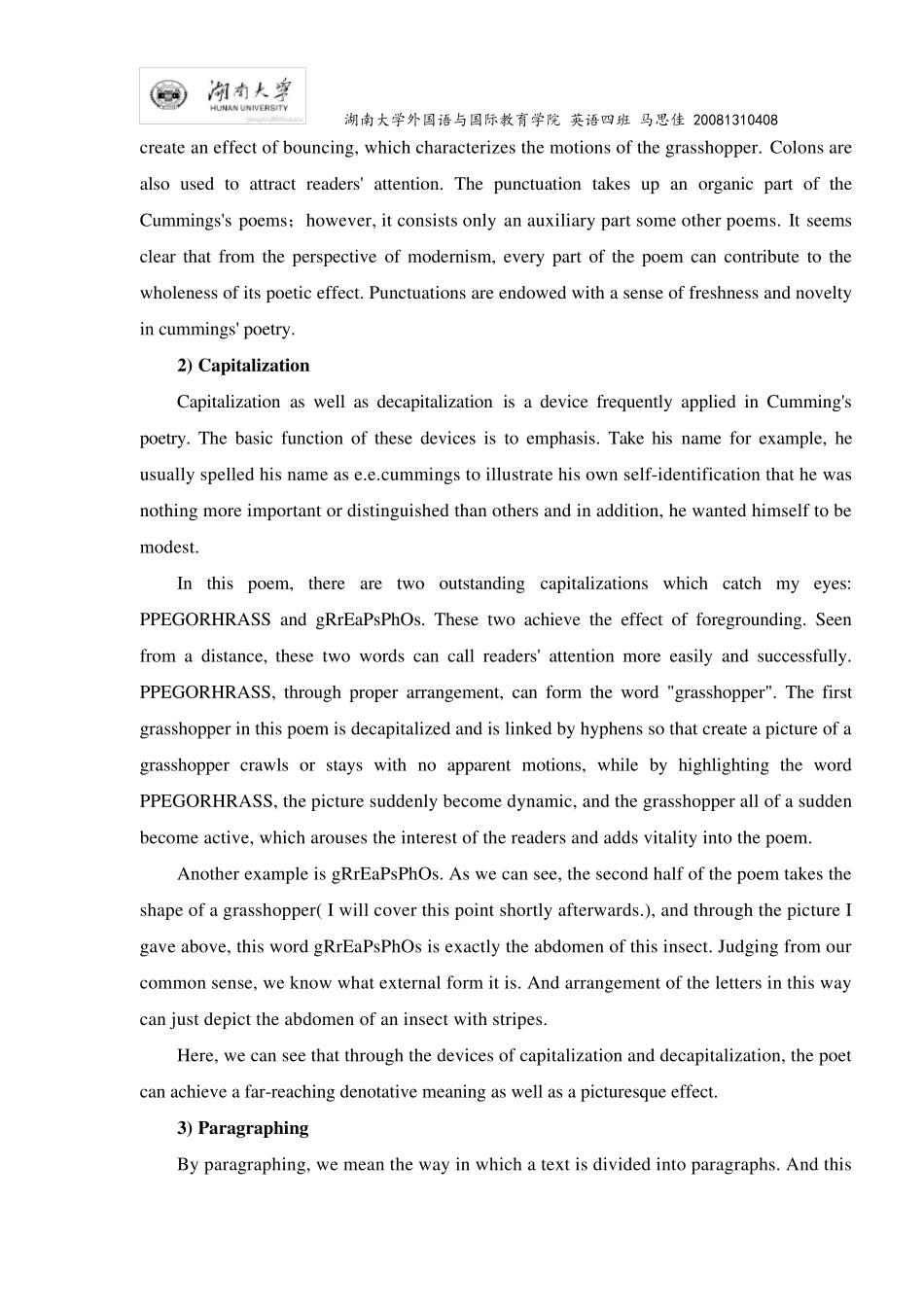湖南大学外国语与国际教育学院 英语四班 马思佳 20081310408 Analysis on (E. ec) um! Mi, n, g-s' poem: r-p-o-p-h-e-s-s-a-g-r r-p-o-p-h-e-s-s-a-g-r r-p-o-p-h-e-s-s-a-g-r Who a ) s w (e loo)k Upnowgath PPEGORHRASS eringint( o- aThe:) l la eA ! p: s a to aThe):l eA !p: S a (r rIvInG gRrEaPsPhOs to rea(be)rran(com)gi(e)ngly ,grasshopper; A possible translation: A grasshopper who we look up now gathering a GRASSHOPPER into leaps: arriving grasshopper rearrangingly become a grasshopper 湖南大学外国语与国际教育学院 英语四班 马思佳 20081310408 Introdu ction E. E. Cummings, born in 1894, was an American poet, painter, essayist, author, and playwright. His body of work encompasses approximately 2,900 poems, two autobiographical novels, four plays and several essays, as well as numerous drawings and paintings. He is remembered as a preeminent voice of 20th century poetry, as well as one of the most popular. He loved cubism and futurism in painting, while all the achievements he made in other areas can hardly be compared with what he did in poetry. In general, his poems can be classified into 3 categories: Blues Poetry, which just like the Blues music, utilizes lyric, rhythm and rhyme, and shares some similar themes such as lost love; concrete poetry, in which typographical arrangement of the words is important in conveying the effect and elements of the poem; futurist, which believes that the constraints of syntax were inappropriate to modern life and that it did not truly represent the mind of the poet. Syntax would serve as a filter in which analogies had to be processed and so analogies would lose their characteristic "stupefaction". In his poetry, meter was rejected and the word was the top concern. In this w...


